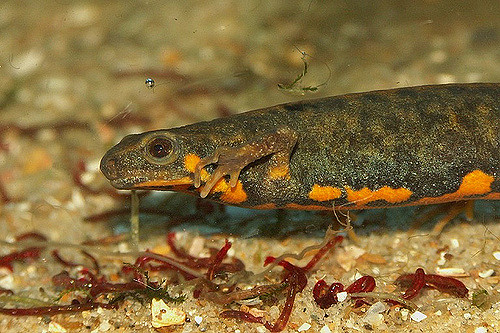

There is often an indistinct orange line along the vertebral ridge. Body color varies greatly, ranging from dark brown to golden yellow. pyrrhogaster, with mature females approximately 8-10 cm (3-4 in) and males slightly smaller than females. In particular, the temperature recommendations may be untrue for other lineages and should be followed with caution.Ĭynops cyanurus have an adult size that is slightly larger than C. Most of the information is based on personal experience. The captive care recommendations given may not be true for other lineages or for other species/subspecies. cyanurus or chenggongensis imported since 2004, as these are the most common animals in captivity. In the captive care sections of this article, I describe care for C. The majority of the animals currently in hobbyist hands are derived from these imports. Unlike the Chemnitz strain, animals descended from these imported animals appear to be healthy and fertile for multiple generations. The animals from these imports generally have a lighter body color, ranging from medium brown to yellow, with some individuals being gold in coloration. Many have been sold under the name Cynops chenggongensis, although it is unknown whether they truly represent this species/subspecies. The geographic origin of these animals is unknown. cyanurus imported from China into the global pet trade. Since approximately 2004, there have been many C. These animals have a consistently dark brown body color.

There are still people keeping animals of this lineage. While the original adults were hardy and long-lived, their offspring have a reputation for being very delicate and difficult to breed, with high rates of infertile eggs and high mortality of offspring. Descendents of this lineage have been bred by several people, but the offspring are generally difficult to raise, even in the hands of experienced breeders.

cyanurus kept in captivity were derived from a group of animals originating from the Chemnitz Zoo in Germany. cyanurus currently in captivity have come from a variety of sources. The details and controversies surrounding the taxonomy of this group are beyond the scope of this article. These three species/subspecies are closely related, and it is often impossible to know the true identity of a captive animal from this complex unless you know the locality where the animal (or its ancestors) was collected.
#BLUETAIL FIREBELLY NEWT FULL#
The species name " Cynops cyanurus" is used in this article to refer to a complex of species/subspecies that includes the taxa cyanurus, chenggongensis and yunnanensis, which are either considered full species, subspecies, or invalid names, depending on the reference.


 0 kommentar(er)
0 kommentar(er)
